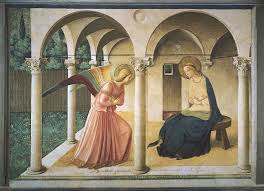Stamp with Collectible Margin: Marisa: Eagle from the Antagoras Tomb, Fresco, 129–109 BCE (Israel 1950)
Marisa: Eagle from the Antagoras Tomb, Fresco, 129–109 BCE (Israel 1950)
25 June (Israel ) within release Bird Representations From Ancient Israel goes into circulation Stamp with Collectible Margin Marisa: Eagle from the Antagoras Tomb, Fresco, 129–109 BCE face value 100 Israeli pruta
| Stamp with Collectible Margin Marisa: Eagle from the Antagoras Tomb, Fresco, 129–109 BCE in catalogues | |
|---|---|
| Michel: | Mi: IL 37T |
| Stamp Number: | Sn: IL C5T |
| Yvert et Tellier: | Yt: IL PA5T |
| Stanley Gibbons: | Sg: IL 36T |
Stamp with Collectible Margin is square format.
Also in the issue Bird Representations From Ancient Israel:
- Stamp with Collectible Margin - Dove With Olive Branch, Mosaic – Jerash, Jordan Synagogue face value 250;
- Stamp with Collectible Margin - Dove, Relief on the Torah Shrines of Many Synagogues face value 50;
- Stamp with Collectible Margin - Doves on Ancient Pottery Lamp, 3rd Century CE face value 5;
- Stamp with Collectible Margin - Eagle From Beit-She’arim, Stone Sculpture, 2nd Century CE face value 30;
- Stamp with Collectible Margin - Marisa: Eagle from the Antagoras Tomb, Fresco, 129–109 BCE face value 100;
- Stamp with Collectible Margin - Ostrich, Mosaic, 1st Century BCE, Beit Alfa Synagogue face value 40;
Stamp with Collectible Margin Marisa: Eagle from the Antagoras Tomb, Fresco, 129–109 BCE it reflects the thematic directions:
Animals are multicellular, eukaryotic organisms of the kingdom Animalia (also called Metazoa). All animals are motile, meaning they can move spontaneously and independently, at some point in their lives. Their body plan eventually becomes fixed as they develop, although some undergo a process of metamorphosis later on in their lives. All animals are heterotrophs: they must ingest other organisms or their products for sustenance.
Birds (Aves), a subgroup of Reptiles, are the last living examples of Dinosaurs. They are a group of endothermic vertebrates, characterised by feathers, toothless beaked jaws, the laying of hard-shelled eggs, a high metabolic rate, a four-chambered heart, and a strong yet lightweight skeleton. Birds live worldwide and range in size from the 5 cm (2 in) bee hummingbird to the 2.75 m (9 ft) ostrich. They rank as the class of tetrapods with the most living species, at approximately ten thousand, with more than half of these being passerines, sometimes known as perching birds. Birds are the closest living relatives of crocodilians.
Eagle is the common name for the golden eagle, bald eagle, and other birds of prey in the family Accipitridae. Eagles belong to several groups of genera, some of which are closely related. True eagles comprise the genus Aquila. Most of the 68 species of eagles are from Eurasia and Africa. Outside this area, just 14 species can be found—two in North America, nine in Central and South America, and three in Australia.
Fresco (pl. frescos or frescoes) is a technique of mural painting executed upon freshly laid ("wet") lime plaster. Water is used as the vehicle for the dry-powder pigment to merge with the plaster, and with the setting of the plaster, the painting becomes an integral part of the wall. The word fresco (Italian: affresco) is derived from the Italian adjective fresco meaning "fresh", and may thus be contrasted with fresco-secco or secco mural painting techniques, which are applied to dried plaster, to supplement painting in fresco. The fresco technique has been employed since antiquity and is closely associated with Italian Renaissance painting.





